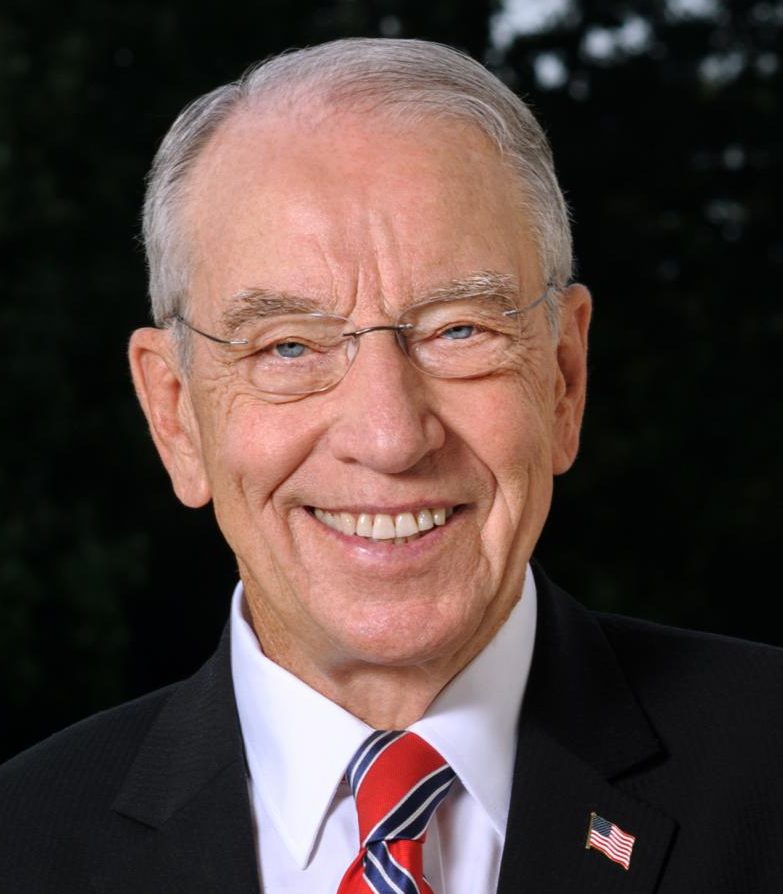Sen. Chuck Grassley, the Senate Judiciary Committee’s incoming Ranking Member today sought details on actions by the Justice Department and FBI before and during a series of anti-law enforcement and anti-government riots that began last summer and have continued in recent weeks. The letter follows a similar joint inquiry by Grassley and incoming Judiciary Committee Chairman Dick Durbin (D-Ill.) focused on the agencies’ actions surrounding the January 6, 2021, attack on the U.S. Capitol complex.
“I am writing this follow-on letter to gather additional information regarding the security posture and planning provided in advance of and during the events of summer 2020 and recent events in Oregon and Washington. Like many Americans, I have been deeply troubled by the rioting, looting, anti-police attacks, and deaths which have occurred this summer. While many legitimately protested in a peaceful manner consistent with their rights under the First Amendment, thousands of others did not,” Grassley wrote.
Civil unrest over the summer took a serious toll: more than 900 law enforcement officers were injured responding to violent riots, including 277 federal officer injuries defending a courthouse in Portland, Ore., and 60 Secret Service officers defending the White House. At least 14,000 people were arrested in riots that occurred in 49 cities across the country over the summer. At least 25 people were killed in those riots. Damage sustained to businesses and other personal property could exceed $2 billion. As a result of last summer’s violence perpetrated largely by anti-government or anti-law enforcement extremists, the FBI opened more than 300 domestic terrorism cases.
Grassley is seeking details on the level of coordination between the Justice Department, FBI and other intelligence and law enforcement agencies ahead of violent demonstrations over the summer, as well as recent events in Oregon and Washington. He’s also seeking details and documents related to the agencies’ awareness and response to the anarchist extremist movement as well as militia extremists and white supremacists. Further, Grassley is requesting statistical information regarding the agencies’ response to violent demonstrations and civil unrest over the summer and in recent weeks, including arrests and injuries to officers.
Full text of Grassley’s letter follows:
February 2, 2021
Monty Wilkinson
Acting Attorney General
U.S. Department of Justice
950 Pennsylvania Avenue NW
Washington, D.C. 20530
The Honorable Christopher A. Wray
Director
Federal Bureau of Investigation
935 Pennsylvania Avenue NW
Washington, D.C. 20535
Dear Acting Attorney General Wilkinson and Director Wray:
On February 1, 2021, Chairman Durbin and I sent a letter to you regarding the January 6 Capitol Complex attack. I am writing this follow-on letter to gather additional information regarding the security posture and planning provided in advance of and during the events of summer 2020 and recent events in Oregon and Washington. Like many Americans, I have been deeply troubled by the rioting, looting, anti-police attacks, and deaths which have occurred this summer. While many legitimately protested in a peaceful manner consistent with their rights under the First Amendment, thousands of others did not.
One of the most upsetting aspects of the violence this summer has been how it has targeted innocent law enforcement officers. Over 700 officers were injured between May 27 and June 8, 2020 alone.[1] This number is likely underreported, as nearly 300 of those injuries occurred only in New York City. Then-acting Deputy Homeland Security Secretary Ken Cuccinelli testified at a hearing in front of this committee’s Subcommittee on the Constitution that there had been 277 federal officer injuries at the federal courthouse in Portland, adding further to that total. Officers were assaulted nightly there for months—slashed, hard objects thrown at them, struck with objects like hammers and baseball bats, and blinded with lasers. In another offensive, 60 secret service officers were injured during a sustained attack on the White House, which caused then-President Trump to be brought into the secure bunker. The church across the street from the White House was lit on fire as a part of that continued assault.
Over 300 people were charged federally for their roles in these weeks and months of violence. Eighty of those charges related to the use of arson and explosives.[2] Others involved assaults on officers and destruction of government property. However, the nationwide riots, which broke out in nearly every major city in the country, were predominantly state offenses. At least 14,000 people were arrested in 49 cities. At least 25 people died in violence related to the riots. Property Claim Services, a company that tracks insurance claims relating to riots and civil disorders, estimated that the insurance losses from the summer’s civil unrest “far outstrip” all previous records to possibly exceed $2 billion.[3] And, unfortunately, such civil unrest has continued in Oregon and Washington in recent weeks by left wing groups.[4]
It is essential to obtain a complete accounting of your preparation for and response to these events. To that end, please answer the following questions no later than February 15, 2021:
- How did DOJ and FBI coordinate planning for the events that took place in summer of 2020 and recent events in Oregon and Washington with other intelligence and law enforcement agencies and departments?
- Did the FBI have adequate intelligence about antigovernment extremist movements before the civil unrest to foresee these events?
- Does the FBI have sufficient visibility into the anarchist extremist movement in order to anticipate future violence by members of that movement?
- Does the FBI have sufficient undercover, confidential human source, and open source media review assets to uncover anarchist extremist threats before they occur? How many undercover agents and confidential sources are assigned to anarchist extremism compared with militia extremism and white supremacism?
- What information did you possess about threats or threat actors related to those events in question 1, including individuals listed on the Terrorist Screening Database (or any other federal watch list available to the FBI) or otherwise affiliated with domestic violent extremist movements?
-
- Please produce all documents and communications that refer or relate to such threats, including intelligence bulletins, threat assessments, situational information reports, briefing materials, and requests for assistance.
-
- Did you prepare an intelligence bulletin or threat assessment about the risk of violence for external or internal consumption? Why or why not?
-
- What information about these threats did you share with federal, state, or local departments and agencies, and with which departments and agencies did you share it and when?
-
- What communications did you have with technology companies about posts on their platforms concerning plans for violence before the events?
- With respect to the civil unrest during the summer of 2020 and in recent weeks in Oregon and Washington, please answer the following:
- How many criminal investigations and cases have been opened?
- How many of those cases have been classified as domestic terrorism cases?
- How many of those cases qualify as “antigovernment extremism”?
- How many of those cases qualify as “anarchist extremism”?
- How many of those cases involved defendants who admit they are Antifa?
- How many of those cases have been classified as rioting and/or civil disorder offenses?
- How many officers were injured during the civil unrest in summer of 2020 and in recent weeks in Oregon and Washington? How many people were killed?
- What portion of the FBI’s active domestic terrorism cases relate to civil unrest?
- Was May and June of 2020 the first time that every FBI field office activated a command post at the same time?
- In light of the recent events, does the FBI consider antigovernment extremism, including anarchist extremism and Antifa adherents, a serious domestic terrorism threat?
Thank you for your attention to this important matter. Should you have questions, please contact x of my Committee staff at 202-224-5225.
Sincerely,
















